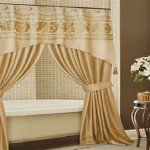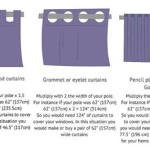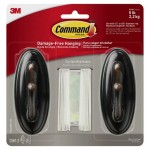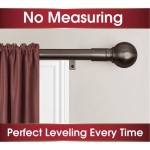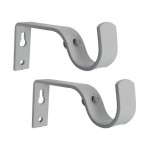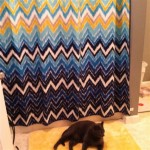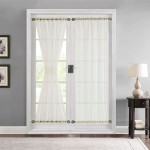Otter Space Blackout Curtains Review: A Deep Dive into Darkness and Design
Blackout curtains have become a staple in modern homes, offering a simple yet effective solution for regulating light, enhancing privacy, and even contributing to energy efficiency. Among the various brands available, Otter Space blackout curtains have garnered considerable attention for their purported combination of functionality and aesthetic appeal. This article provides a comprehensive review of Otter Space blackout curtains, examining their key features, performance, design options, and overall value proposition.
The primary function of blackout curtains is, of course, to block out ambient light. This serves numerous purposes, from facilitating better sleep to creating a more comfortable environment for watching movies or working on a computer. Otter Space claims its curtains achieve near-total light blockage, and we will analyze whether this claim holds true under various lighting conditions.
Beyond light control, thermal insulation is another crucial factor to consider when evaluating blackout curtains. Effective insulation can reduce energy consumption by minimizing heat transfer during both summer and winter months. We will examine the construction and materials used in Otter Space curtains to determine their insulation capabilities.
Aesthetics are also important. Curtains are a visible element of interior design, and their appearance can significantly impact the overall ambiance of a room. Otter Space offers a range of styles and colors, and this review will assess the design options available and their potential to complement different décor schemes.
Durability and ease of maintenance are practical considerations that contribute to the long-term value of any curtain. This review will discuss the materials used, construction quality, and recommended care instructions for Otter Space blackout curtains.
Light Blocking Effectiveness: Assessing the Darkness Quotient
The effectiveness of a blackout curtain hinges on its ability to prevent light from penetrating through the fabric. To achieve this, manufacturers employ various techniques, including tightly woven fabrics, multiple layers, and specialized coatings. Otter Space blackout curtains reportedly utilize a combination of these methods to achieve a high level of light blockage.
Independent testing and user feedback are essential in determining the true light-blocking capability of any blackout curtain. While laboratory tests can provide controlled measurements, real-world experiences often reveal nuances that are not captured in such environments. User reviews frequently mention the specific conditions under which the curtains were tested, such as exposure to direct sunlight, streetlights, or neighboring buildings.
Several factors can influence the perceived light blockage, including the color of the curtains, the type of window, and the installation method. Darker colors generally offer better light blockage than lighter colors, as they absorb more light. Similarly, windows with gaps or imperfections may allow light to seep through, regardless of the quality of the curtains.
Installation is a critical step. Achieving optimal light blockage requires proper installation, including ensuring that the curtains fully cover the window and minimize gaps along the edges and top. Using a curtain rod that extends beyond the window frame can help to prevent light leakage around the sides. Some users opt for additional measures, such as installing light-blocking strips or using Velcro to seal the edges of the curtains.
The weave density and fabric composition play a significant role in light-blocking capabilities. Tightly woven fabrics, such as microfiber or polyester, tend to be more effective at blocking light than loosely woven fabrics. Additionally, the presence of a blackout lining or coating can further enhance light blockage.
Many blackout curtains incorporate a multi-layered design, with a decorative outer layer and a light-blocking inner layer. The inner layer is typically made from a dense material that absorbs or reflects light, preventing it from passing through the fabric. The outer layer provides the desired aesthetic appeal, while the inner layer handles the primary function of light control.
The presence of grommets or rod pockets can also affect light blockage. Grommets, which are metal rings that hold the curtain onto the rod, may allow some light to seep through if they are not properly aligned. Rod pockets, which are fabric tubes that slide over the rod, generally offer better light blockage than grommets, as they completely cover the top of the curtain.
Thermal Insulation Properties: Evaluating Energy Efficiency
Beyond light control, thermal insulation is an increasingly important feature of blackout curtains. Effective insulation can help to regulate the temperature of a room, reducing the need for air conditioning or heating and ultimately lowering energy bills. Otter Space claims its curtains offer significant thermal insulation benefits, and this section will assess the validity of this claim.
The thermal insulation properties of a curtain depend primarily on its thickness, material composition, and construction. Thicker curtains generally provide better insulation than thinner curtains, as they create a greater barrier to heat transfer. Similarly, materials with low thermal conductivity, such as certain types of polyester or acrylic, are more effective at preventing heat from passing through the fabric.
The presence of a thermal lining can significantly enhance the insulation capabilities of a curtain. Thermal linings are typically made from a dense, insulating material that is bonded to the back of the curtain fabric. These linings help to reflect heat back into the room during the winter and block heat from entering the room during the summer.
The weave density of the fabric also plays a role in thermal insulation. Tightly woven fabrics, such as those used in blackout curtains, tend to provide better insulation than loosely woven fabrics. This is because the tighter weave reduces airflow through the fabric, minimizing heat transfer.
The color of the curtains can also affect their thermal insulation properties. Darker colors tend to absorb more heat than lighter colors. This can be advantageous during the winter, as the curtains will absorb heat from sunlight and help to warm the room. However, during the summer, darker colors can contribute to overheating, as they will absorb heat from the outside.
Air gaps around the edges of the curtains can significantly reduce their thermal insulation effectiveness. Even the most well-insulated curtains will be ineffective if there are gaps that allow air to flow freely in and out of the room. To maximize thermal insulation, it is essential to ensure that the curtains fit snugly against the window frame and minimize any air gaps.
The number of layers in the curtains can also affect their thermal insulation properties. Multi-layered curtains, such as those with a decorative outer layer and a thermal lining, generally provide better insulation than single-layer curtains. The additional layers create a greater barrier to heat transfer, reducing the amount of heat that can pass through the fabric.
Design and Aesthetics: Matching Form with Function
While functionality is paramount, the aesthetic appeal of curtains is equally important. Curtains contribute significantly to the overall décor of a room, and their design should complement the existing style and color scheme. Otter Space offers a range of designs and colors, and this section will assess the available options and their potential to enhance the look and feel of a room.
The color of the curtains should be carefully considered to ensure that it harmonizes with the existing décor. Neutral colors, such as beige, gray, or white, are generally versatile and can be easily incorporated into a variety of color schemes. However, bolder colors can be used to create a statement or add a pop of color to a room.
The pattern or texture of the curtains can also influence their aesthetic impact. Plain curtains offer a minimalist look, while patterned curtains can add visual interest and depth to a room. Textured fabrics can also add a tactile dimension, enhancing the overall sensory experience.
The length and width of the curtains should be appropriate for the size and shape of the window. Curtains that are too short or too narrow can look awkward and detract from the overall appearance of the room. Generally, curtains should extend to the floor or slightly beyond, and they should be wide enough to cover the entire window when closed.
The type of heading, such as grommets, rod pockets, or pleats, can also affect the aesthetic of the curtains. Grommets create a more modern and streamlined look, while rod pockets offer a more traditional and classic appearance. Pleated curtains add a touch of formality and sophistication.
The material of the curtains can also influence their aesthetic impression. Silk curtains offer a luxurious and elegant look, while linen curtains provide a more casual and relaxed feel. Polyester curtains are a durable and affordable option that can be easily maintained.
The presence of tiebacks or valances can further enhance the aesthetic appeal of curtains. Tiebacks can be used to gather the curtains and allow more light into the room, while valances can add a decorative touch to the top of the window.
Consider the overall style of the room when selecting blackout curtains. A modern room may benefit from sleek, minimalist curtains in a neutral color, while a traditional room may be better suited to more ornate curtains with a patterned fabric.

Otter 30 50 Blackout Curtains For Bedroom Dreamcatcher Drapes Boho Feather Living Room 2 Panels 38 Wx54 L Coastal Sea Animals

Otter 30 50 Blackout Curtains For Bedroom Dreamcatcher Drapes Boho Feather Living Room 2 Panels 38 Wx54 L Coastal Sea Animals

Linen Blackout Curtains Pinch Pleat Ripple Fold Drapes Easeease

Peace Quiet Noise Reducing Blackout Curtain White 50 W X 108 L Pottery Barn

Best Blackout Curtains Of 2024 Consumer Reports

Custom Blackout Curtains For Bedroom Nursery Lumos

50 X63 Blackout Aruba Window Curtain Panel Fern Green Threshold Recycled Polyester Solid Drapes Indoor Use

Superior Leaves Blackout Curtains Set Of 2 52 Inch X 96 Charcoal

Set Of 2 Light Gray Minimalist Blackout Curtains Linen Look Grey Bedroom Panels Insulating Room Darkening Solid Etsy

At Home Riley Grey White Embroidered Blackout Curtain Panel 84

